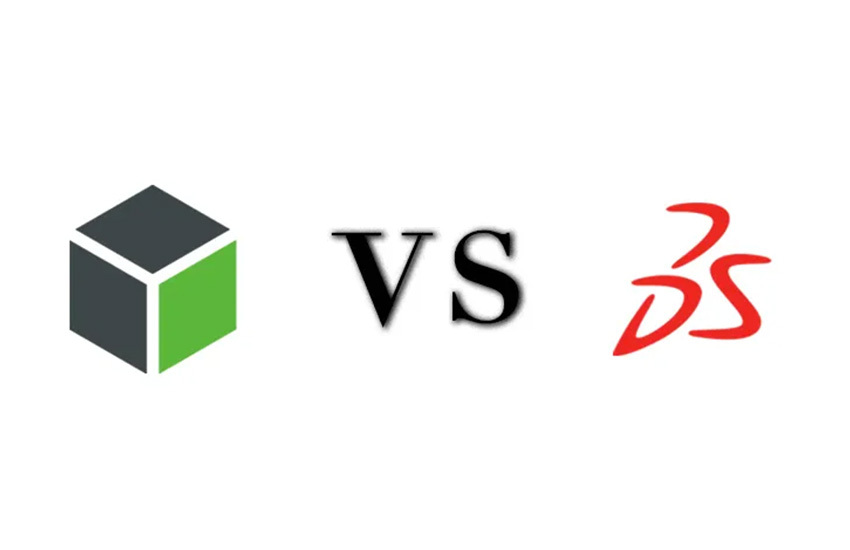
When it comes to Computer-Aided Design (CAD) software, choosing the right tool can significantly impact your design process and productivity. Two of the most prominent players in the market are Creo and SolidWorks. They dominate the market, each with its strengths and weaknesses. This article aims to provide an in-depth comparison of these two software solutions, helping you determine which one is best suited for your needs.
Creo is developed by PTC and is known for its robust parametric capabilities and advanced modeling features. Industries such as automotive, aerospace, and industrial design widely use this software.
To learn more about advanced techniques in Creo, read our comprehensive blog, Advanced Techniques in Creo Software for Experienced Users!
SolidWorks, developed by Dassault Systèmes, is favored for its user-friendly interface and strong community support, making it a popular choice among engineers and designers in various sectors.
According to recent industry statistics, SolidWorks holds a significant market share of around 30% in the CAD software domain, while Creo commands about 10% of the market. The preference for SolidWorks is often attributed to its ease of use and integration with various design tools. However, Creo’s advanced capabilities make it a formidable competitor, especially in complex engineering environments.
| CAD Software | Market Share (%) |
|---|---|
| SolidWorks | 30 |
| Creo | 10 |
| Others | 60 |
Creo 3D Modeling: Creo allows users to easily create complex designs that can be modified with minimal effort, it is specifically strong in parametric modeling. This flexibility is crucial in industries where design iterations are common.
SolidWorks: Solidworks excels in creating assemblies and integrating simulations. SolidWorks also provides robust modeling tools. Its intuitive design tools make it easier for users to visualize their designs in real time.
Creo: Creo’s new interface can be less intuitive for new users, though it offers powerful tools to its users. But if one masters Creo, its capabilities can far exceed those of many other CAD tools.
SolidWorks: Solidworks has a user-friendly interface. It is easier for beginners to navigate. It has community forums and extensive online tutorials that help further enhance its usability.
CAD Customization: This feature is available in both Creo and SolidWorks. They offer customization options to tailor the software to specific industry needs. Creo has open architecture that allows for extensive customization, making it suitable for unique manufacturing processes. On the other hand, though SolidWorks provides customizable features, it is generally considered less flexible.
Want to know which are the 4 main pillars of CAD customization? Then, refer to our blog, “The 4 Pillars of SolidWorks Customization: A Comprehensive Guide”!
Both software packages Creo and SolidWorks, are capable of handling large assemblies, when it comes to performance. However, due to its advanced algorithms, Creo tends to perform better in complex parametric environments. This is particularly beneficial in industries such as aerospace and automotive, where precision is paramount.
Creo Software Price: One of the crucial factors to consider while choosing between Creo and Solidworks is cost. Depending on the modules you choose, Creo's pricing model can be higher than SolidWorks.
Parametric Modeling: Parametric modeling capabilities of Creo allow you to create complex designs by defining relationships between different elements. This makes it easier to make changes and explore design variations.
Advanced Surfacing: Creo is ideal for industries like automotive and aerospace as it excels in creating intricate and organic shapes.
Large Assembly Management: Creo is suitable for projects with numerous components as it can handle large and complex assemblies.
Customization: Creo allows you to tailor the software to your specific needs and workflows because it offers a high degree of customization.
Ease of Use: SolidWorks is a popular choice for beginners and smaller organizations as it is often easier to learn and use than Creo.
Sheet Metal Design: SolidWorks proves itself stronger for sheet metal design, including features like flat pattern creation and bend allowance calculation.
Simulation Tools: SolidWorks helps you validate your designs by offering integrated simulation tools for stress analysis, motion studies, and flow simulation.
Large Community: Having a large and active user community, SolidWorks provides access to resources, tutorials, and support.
| Feature | SolidWorks Pros | SolidWorks Cons |
|---|---|---|
| Ease of Use | Intuitive interface | Limited advanced features |
| Community Support | Strong user community | Cost can add up with add-ons |
| Simulation Tools | Advanced simulation capabilities | Performance can lag in large files |
| Feature | Creo Pros | Creo Cons |
|---|---|---|
| Parametric Modeling | Excellent for complex designs | Steeper learning curve |
| Performance | Superior in handling large assemblies | Higher initial cost |
| Customization | Highly customizable | Interface can be overwhelming |
“Is Creo better than SolidWorks?" What according to you will be the answer to this question? Let’s find out! Creo is the better option if you require extensive parametric modeling and customization. On the other hand, SolidWorks could be your best option, if ease of use and a supportive community are more critical for you.
Underlying technologies and philosophies of Creo and Solidworks differ significantly though there are similarities between the two software packages, such as their capabilities in 3D modeling. Creo’s focuses more on parametric modeling, while SolidWorks emphasizes more on user experience and accessibility.

Your specific needs, budget, and team's experience will decide the best CAD software for you. Consider following factors when making your decision:
Industry: Certain industries may give preference to one software over the other. For example, Creo is more popular in industries such as aerospace and automotive, while SolidWorks is widely used in mechanical engineering and product design.
Project Complexity: Creo's advanced features and capabilities may be more suitable for you, if you frequently work on large and complex projects.
Team Experience: Familiarity of the team with any particular software is important. If your team is already familiar with one software, it may be more efficient to continue using it.
Budget: SolidWorks can be a more cost-effective option for smaller organizations as it is generally less expensive than Creo.
Both Creo and SolidWorks with their own unique strengths are powerful CAD software programs. For those in industries that demand high precision and complex modeling, Creo CAD software stands out. Conversely, for teams looking for a more user-friendly experience and a robust support network, SolidWorks remains a strong contender. The best way to determine which one is right for you is to try them out and see which one aligns better with your workflow and preferences.
You can make an informed decision and select the CAD software that will help you achieve your design goals by carefully considering the factors outlined in this comparison. If you’re still uncertain, consider exploring both tools further or consulting with experts from Modelcam Technologies, who can provide tailored advice based on your unique needs. The right CAD software can significantly enhance your design processes, making it worth investing the time to make an informed decision.
Let’s connect: www.modelcamtechnologies.com
Email: sales@modelcamtechnologies.com
Mobile no : +91 8237016167
©Copyright 2025. All rights reserved by Modelcam Technologies Private Limited PUNE.